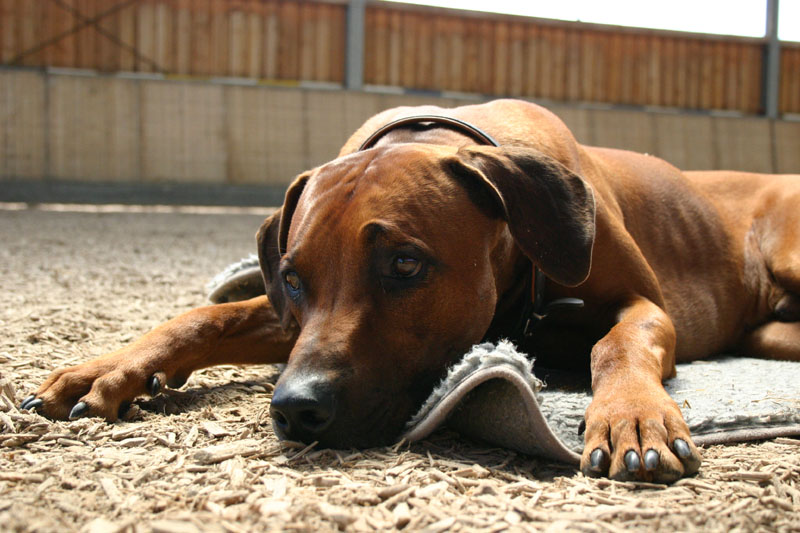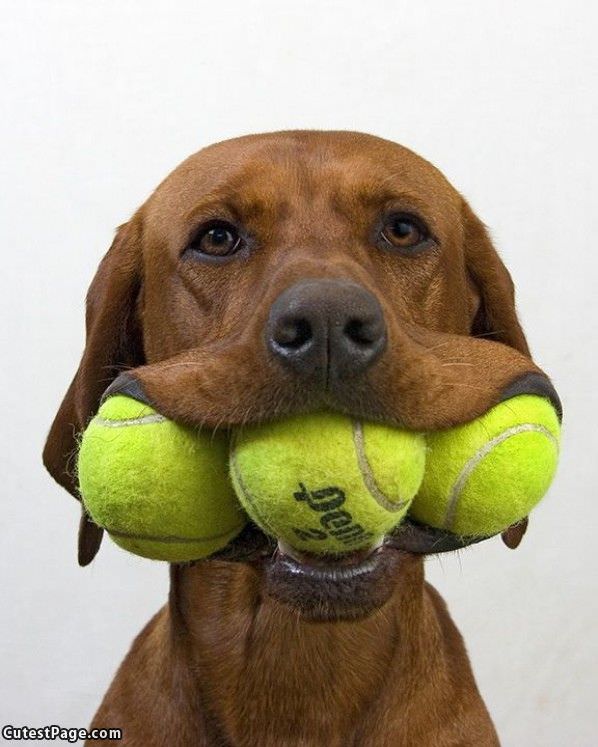 |
| freefunnydogpictures.com |
♦ Preventing
Puppy Aggressiveness
(Note: the following comments refer
to puppies only. Aggression issues with grown dogs are best handled by an
experienced trainer.)
Neuter your puppy. The most frequent
dogfights happen to young, intact (which means not neutered) males. Simple
solution: neuter your dog at six months of age. If he is exhibiting numerous
incidents of aggressive or dominant behavior, talk to your vet about neutering
the puppy even earlier.
All humans are above the puppy.
Explain to everyone in your family (or anyone who spends a lot of time in your
house) that they have to take a superior position to the dog—something as
simple as all people in the household asking the dog to sit before any treat or
meal, or even just requesting a sit and then giving the dog generous praise as
a reward.
Humans control all the food. Your
puppy has to learn this. Get the puppy used to activity near his food dish by
having the adults add a handful of dry food to the puppy’s bowl as he is
eating. Move slowly, and make sure he sees you coming. The idea isn’t to
startle him, it’s for the puppy to learn
to tolerate activity near his bowl. Once the adults have done this
without incident and the puppy is clearly unthreatened, allow the child(ren) in
the family to add a handful of kibble to the pup’s bowl.
Give a toy to the dog, then take it
away, then give it back. The point of this is to create another area in the
dog’s head in which humans rule. You can go a step further and teach the dog to
give the toy to you, rather than you taking it back. Put your open palm under
his mouth and say “Out” or “Let go” or “Give.” As soon as he starts to relax
his hold on the toy, encourage him verbally (“Good boy” or “That’s it”) and
give him lots of praise.
Do not play rough with the puppy.
Avoid all games that get a puppy roughed up or riled up—no tug-of-war,
keep-away or monkey-in-the-middle. Also avoid any version of those games that
could encourage an aggressive reaction from the puppy. Don’t let children
wrestle or tumble around with him on the ground. Instead, choose games like
hide-and-seek or find-and-fetch.
Do not let the pup play rough with
you. No biting—not ever, not at all. Be consistent. Don’t let the puppy chew on
your fingers or anywhere else on you. Correct the chewing with a deep, growly
“Nooo,” and then immediately give the puppy a toy that he is allowed to chew
on.
Growling is never acceptable. It has
to be stopped from the first noise in a puppy’s throat. You need to cut that
right off by using a deep, stern voice to react to any deep-throated protest or
commentary by the dog.
♦ Begging
The basic idea is that people create
begging dogs, and if you start it when she is a puppy, you’ll have set her on
the wrong course yourself and encouraged a dog to stare at you—hovering and
panting at your feet while you eat. As with everything concerning a puppy,
habits learned early will make both of your lives easy for a lifetime.
Do not feed tidbits from your hand at
the table. Dropping bits of food on the floor is the exact same thing, so don’t
kid yourself.
You can put the puppy in her crate or
tether her to a bed near the table and give her a nice chew toy. As soon as the
meal is finished, you can release her and put a small bite of something down on
the floor in the kitchen as a reward for being quiet and patient during your
meal. This was a plan I stumbled on thanks to my habit of letting my dogs lick
the dinner plates before putting them (the plates, that is) in the dishwasher.
I discovered that the dogs went right to their beds or chewed a toy during our
meal, in part because they knew that there was something in it for them at the
end.
♦ Chewing Shoes, Furniture, etc.
Give the puppy something to put in
his mouth to replace whatever item you find yourself rescuing. Think of it as a
barter system—you relinquish my shoe and I replace it with a plastic
squeaky-toy lamb chop. It is crucial that when the puppy releases your property
and takes the bartered item in its place, you praise the dickens out of him for
doing so.
♦ Start Gently
with Corrections.
Use a lower-impact correction first,
give it a chance to sink in and then move to a stronger correction. A simple
verbal “no” may interrupt the puppy enough that you can steer him away from the
unwanted behavior. You don’t want to raise your voice or clap your hands or
whatever you might do to loudly get his attention if softly calling his name is
effective.
If the puppy begins to go for the
undesirable action again, keep your voice low (reminiscent of his mother’s
growl) and make a short, sharp “Anh!” sound (like the first half of “uh-uh”—as
if to say, “Oh, no you don’t.”). It’s amazing how effective this sound can be:
all you have to do is make the sound and he will look up at you. By doing so,
he has stopped doing or trying to do the forbidden act, and now you can praise
him up and down, or perhaps give him something else to chew or chase instead.
The secret squirt Fill a squirt gun
or squirt bottle with water and a splash of something unpleasant like lemon
juice or vinegar, and keep it handy. Try just plain water if you want first,
which works fine without “additives” for most dogs.
When the dog is doing something you
don’t want, say “No” firmly but unemotionally and give him a good squirt in the
face. Hold the bottle next to your side so the puppy will not see where the
stinging water is coming from. Let the squirt do the work. Just go on about
your business as if you know nothing about it.
Time-Out Just as with children who
misbehave, it is acceptable to try a “time-out” to reinforce the point you are
teaching. However, there are three caveats here:
1. You cannot reinforce a rule that the
puppy does not yet understand or remember.
2. You should not shut a puppy into a
space behind a closed door. Being shut out of sight causes many puppies to
panic. It can be frightening and confusing, and is equivalent to locking a
child in a closet to reprimand him. A puppy needs to be confined behind a
safety gate or in a crate where he can see where you are, or else, in the
throes of a panic attack, he may hurt himself or scratch and bite at the door
or other objects, etc.
3. You should not shove your puppy into
his crate as though it is jail—whenever he goes into his crate it has to be a
neutral place. So if you place him there, make it a firm but gentle placement,
because you don’t want a puppy to ever have a negative impression of the crate
itself, which is his den and needs to always be a safe place for him regardless
of why he’s in it.
Copyright © Tracie Hotchner – Originally appeared in The Dog Bible: Everything Your Dog Wants You to Know by Tracie Hotchner














.jpg?m=1367459879)

